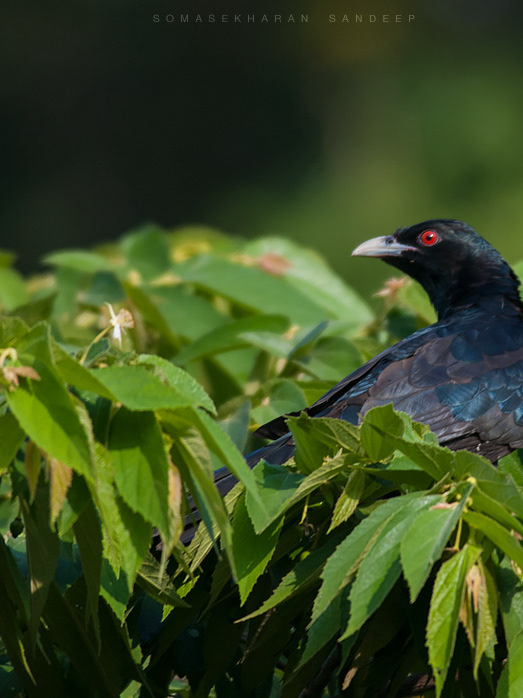I stand inside the shrine, feet numb against the icy water still puddled over the freshly washed rough cut granite flooring. I am in line behind Sahastra who is shifting his weight from one leg to the other. Rajeev, his better half Prachi and Rohit fall in line behind me. The cold is biting. Sahastra, a veteran of many Himalayan treks, and strictly a zero fuss guy, turns and whispers, shivering, “Man, religion is tough in high altitudes”. The wisp of vapor from his breath against the dark stone walls look like the exhaust of a 1990s truck. An ancient bullhorn plays hymns praising lord Shiva in a crackling voice. At 7:00pm, the temple priest takes over from the bullhorn, in a booming voice almost as loud, his voice echoing inside the shrine, in a more melodious tone.
The Madmaheshwar Temple
Here we are, in Madmaheshwar (also called Madhyamaheshwar) - one of the Hindu Panch Kedar pilgrimage spots. The intention of the trip was not spiritual at all. The plan was to enjoy a trek through the lush green Himalayas, to one of the most secluded villages there, observing the flora and the fauna. But there is something about the Himalayas that just reaffirms the existence of spirituality deep within ones heart. You feel tiny, puny and insignificant. You don’t feel a conqueror when you have reached the summit- you just feel blessed, to have been able to come this far.
I am awakened from my reverie as the chanting by the priest comes to an end. I wonder why I didn’t make a wish to the Lord of Madmaheshwar. Perhaps the advice Sahastra gave me before the trek has made a deep impression. “You can’t bully or coax the Himalayas into revealing you anything you want to see. You get to see what you deserve, when he feels you deserve it”.
Madmaheshwar is nearly 3500 meters above sea level and gets covered by snow in winter, before which the deity is symbolically relocated to a temple downhill, in Ukhimath. The village which has barely 10 houses would get deserted as the villagers too move down to Gaundhar, a village further downhill. It takes two days of climbing (and some descending) after a couple of hour’s jeep drive, from the nearest town Ukhimath to reach Madmaheshwar, Uttarakhand.
A rivulet as seen from Madmaheshwar
After two days of walk , past landslides, sheltering under rocky outcrops during rains, and eating out of the kitchens ( literally) of villages in the way, here we were, standing with the hands folded, in front of the idol that looked incredibly irradiant. The priest hands us a divinely fragrant brahma kamal (Saussurea obvallata) flower each, and invites us to his quarters. And for an hour he sits with us and chats about the tough life at Madmaheshwar.
We walk back and reassess our situation over (finger licking good) hot parathas made by our host, Mr Panwar. We have been holed up for two days here in our camp, thanks to the rain. The Himalayas probably think we don’t deserve anything yet. We had a plan to trek to a lake – Brahma Tal – where the Brahma Kamal grows, but eventually abandoned it on getting to hear that the trail has been rained out. We have been confined to the small shack that we rented, thanks to the incessant rains. Finally we conclude that the next day we would climb up the adjacent hill atop which the older Madmaheshwar temple stood. Interestingly the temple is called “Booddha Madmaheshwar” – booddha as in the hindi word meaning old.
Booddha Madmaheshwar
So we climb a few hours after lunch when the rain had let up a little, and to our dismay the rain resumes as soon as we start climbing. The trail is totally washed off and we walk helter skelter, slipping and sliding on the mud. Sahastra and our guide Rajesh promise spottings of the Himalayan Monal, a brilliantly colored bird (which is incidentally the state bird of Uttarakhand) that can put the national bird peacock to shame. But all we see as we reach the top is the silhouette of a bland female monal fluttering away to safety uttering shrill cries. We roam around spotting a few birds, and are back in a couple of hours, mostly disappointed. Rajesh has in his hand, a bouquet made of wild flowers which he offers at the shrine.
Rajesh’s bouquet
I sit inside the shack, wiping the raindrops off my camera when I hear Rajeev shout “Come fast, get your camera as well”. I sprint to the point where he stands; forgetting that sudden exertion at this altitude could even kill you. The sight I behold takes away what remains of my wheezing, laborious breath. The last light of the dying sun reflects magically on the snow capped peaks and the clouds kissing them. I fire away, panting like a dog.
A glimpse of the Himalayan magic that was revealed to us
Sahastra puts a hand over my shoulder and smiles, “Sandy boy, it does seem that the Himalayas have finally decided that you deserve to see something”. And as we watch, our hearts full of gratitude, the light on the snow peaks slowly gets extinguished.
Since then, it’s been years and I have spent altogether 12 more days in the Himalayas. Never have the Himalayas felt that I deserve to see something as spectacular. I would not know when again!
~ End





